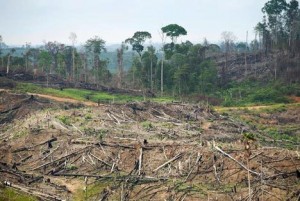Borneo was one of the most severely logged countries having logged almost a quarter of their forest cover in the last 20 years. If they continue logging at this rate it is clear that the country would not be able to sustain this amount of logging. However, logging is still a large part of the local industry today. Many still work for the logging companies, which generate money for the local economy. Sadly, as much as 70-75% of the timber collected is illegal.
Much of the illegal logging is carried out openly, sometimes even in national parks. Malaysia also seems to be an opening for illegal timber with most of it being secretly shipped to Malaysia before making their way out around the world.
Logging degrades and destroys the forests that the orangutans live in and this limits the amount of space an orangutan can roam. Orangutans are solitary and they roam large patches of forests everyday. When an orangutans territory is invaded by logging the orangutans tend to escape. Orangutans who are pushed deeper into the forest by deforestation can subject to overcrowding. This places stress on them and causes them to reduce the rate of reproduction. Studies have shown that orangutan density in a logged forest as compared to a forest that is untouched will only be up to 40% even after 5 years.
Another problem is that logging companies do not provide the workers with food. To solve this problem, the workers would hunt animals in the forests to eat. This includes orangutans, birds and other small mammals that are a source of food for orangutans.


